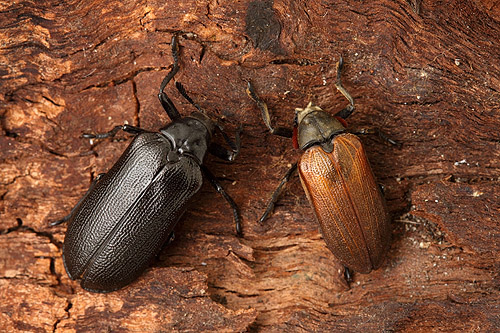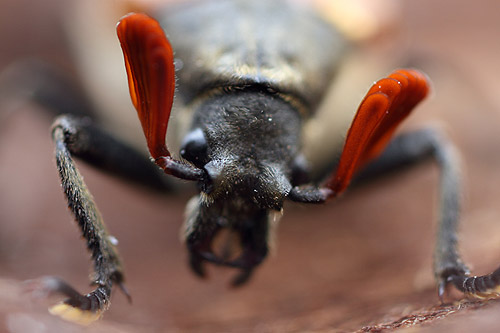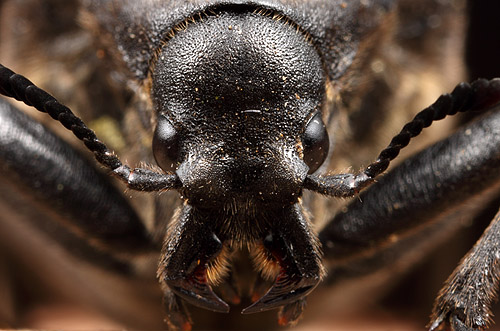
Female (left) and male Sandalus niger Cicada Parasite Beetles
Sandalus niger is one of the oddest beetles in eastern North America. While most parasitic insects are concentrated in other orders- notably Hymenoptera and Diptera- Coleoptera contains relatively few parasites. But there are a few.
Beetle larvae in the small polyphagan family Rhipiceridae attack cicada nymphs in their underground burrows. Our local species is Sandalus niger, and in the past week the spectacular inch-long adults have been gathering in mating aggregations on tree trunks around campus.

the remarkable antennae of the Sandalus male

The antennae of the female are much less developed
Photo details (top): Canon 100mm f2.8 macro lens on a Canon EOS 50D
ISO 250, f/11, 1/160 sec, indirect strobe in white box
(middle): Canon MP-E 65mm 1-5x macro lens on a Canon EOS 50D
ISO 250, f/2.8, 1/80 sec, diffuse ambient light with moderate flash backlighting
(bottom): Canon MP-E 65mm 1-5x macro lens on a Canon EOS 50D
ISO 100, f/13, 1/160 sec, flash diffused through tracing paper

Love those antennae they have a velvet look about them.
I'm with Jack on the male antennae.
But it's that last photo that takes the cake. Um... Gorgeous! It's not the antennae that grab my attention, though; it's the mandibles (or is that 'chompers'? I forget...).
By an odd co-incidence I have a Rhipicerid on the desk here right in front of me. One of our Australian species, http://drhoz.livejournal.com/624832.html